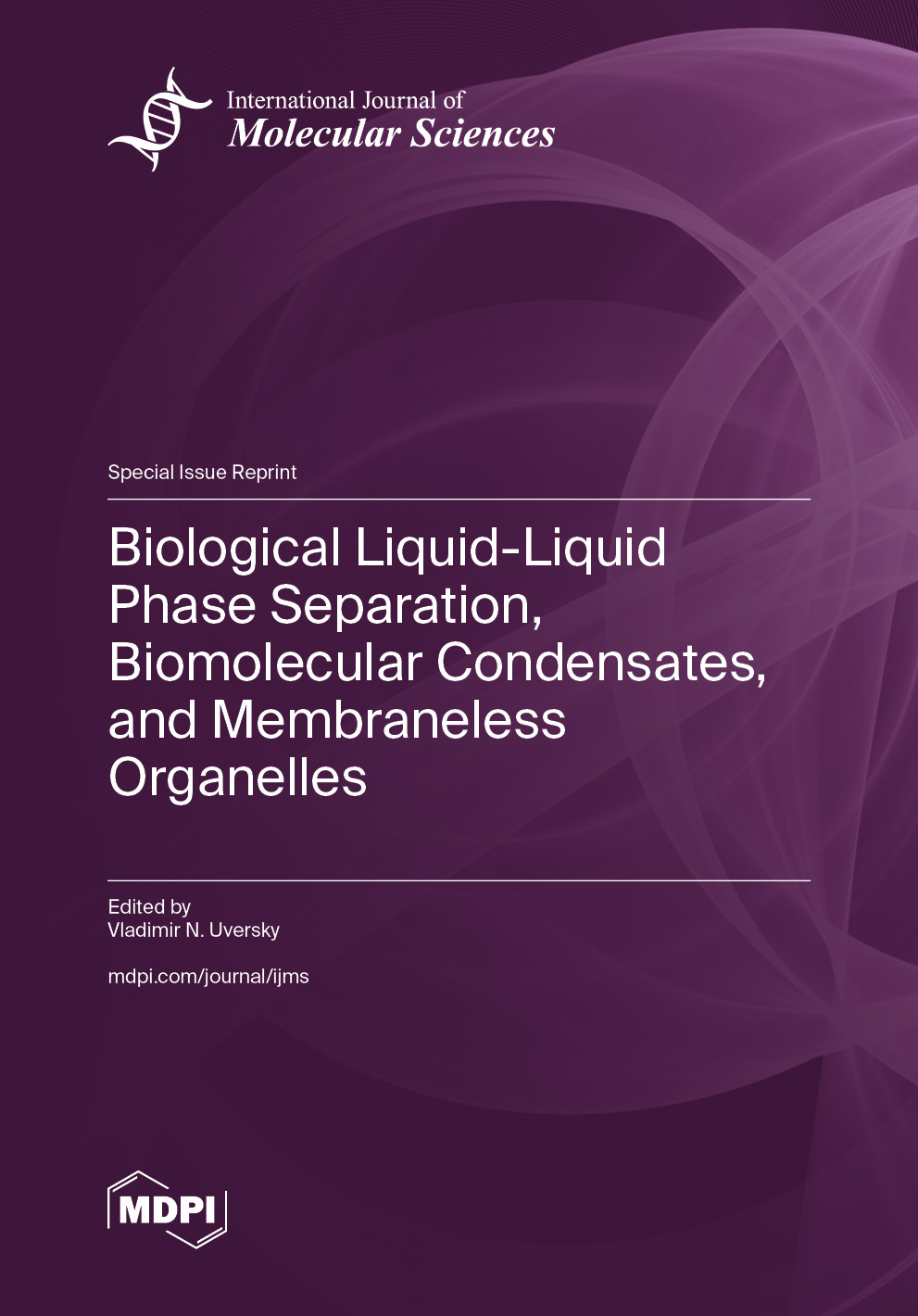Biological Liquid-Liquid Phase Separation, Biomolecular Condensates, and Membraneless Organelles
A special issue of International Journal of Molecular Sciences (ISSN 1422-0067). This special issue belongs to the section "Molecular Biophysics".
Deadline for manuscript submissions: closed (28 February 2023) | Viewed by 27498
Special Issue Editor
Interests: intrinsically disordered proteins; protein folding; protein misfolding; partially folded proteins; protein aggregation; protein structure; protein function; protein stability; protein biophysics; protein bioinformatics; conformational diseases; protein–ligand interactions; protein–protein interactions; liquid-liquid phase transitions
Special Issues, Collections and Topics in MDPI journals
Special Issue Information
Dear Colleagues,
Currently, there is immense interest among the scientific community in intracellular liquid–liquid phase separation (LLPS) and resulting biomolecular condensates (BMCs) and membrane-less organelles (MLOs). Obviously, such BMCs and MLOs, which do not have enclosing membranes, are mysterious subjects, whose components can directly contact, and exchange with, the exterior environment and whose biogenesis and structural integrity rely exclusively on protein–protein and/or protein–nucleic acid interactions. BMCs/MLOs, are large, highly dynamic, macromolecular ensembles visible under the light microscope as spherical micron-sized droplets. They demonstrate liquid-like behavior, being able to drip, formation of spherical structures upon fusion, and wetting. Therefore, MLOs are condensed liquid droplets formed as a result of reversible and highly controlled LLPS. MLOs are different in size, shape, and composition, and have important and diverse biological functions. Typically, MLOs are formed in response to specific cellular activities or stress. Alterations of their biogenesis might have pathological consequences, and many MLOs are associated with the pathogenesis of various diseases. This Special Issue includes research papers and reviews dedicated to the different aspects of LLPS, BMCs, and MLOs.
Dr. Vladimir N. Uversky
Guest Editor
Manuscript Submission Information
Manuscripts should be submitted online at www.mdpi.com by registering and logging in to this website. Once you are registered, click here to go to the submission form. Manuscripts can be submitted until the deadline. All submissions that pass pre-check are peer-reviewed. Accepted papers will be published continuously in the journal (as soon as accepted) and will be listed together on the special issue website. Research articles, review articles as well as short communications are invited. For planned papers, a title and short abstract (about 100 words) can be sent to the Editorial Office for announcement on this website.
Submitted manuscripts should not have been published previously, nor be under consideration for publication elsewhere (except conference proceedings papers). All manuscripts are thoroughly refereed through a single-blind peer-review process. A guide for authors and other relevant information for submission of manuscripts is available on the Instructions for Authors page. International Journal of Molecular Sciences is an international peer-reviewed open access semimonthly journal published by MDPI.
Please visit the Instructions for Authors page before submitting a manuscript. There is an Article Processing Charge (APC) for publication in this open access journal. For details about the APC please see here. Submitted papers should be well formatted and use good English. Authors may use MDPI's English editing service prior to publication or during author revisions.







